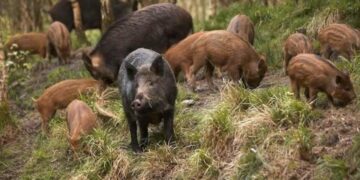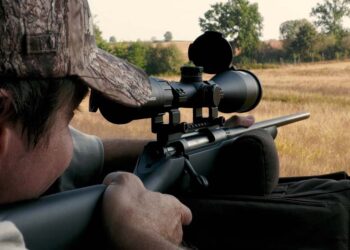
Do you know the water rail? Today we tell the story of this seductive colored bird with a disarming beauty.
His family is that of the Rallidi, cousin of the moorhen, the coot and the flyer. All these species are well known in Europe, North Africa but also in Western Asia. Italy frequents the Porciglione regularly: although it is a regular migrant, it returns to the peninsula to winter every year, and in recent times sedentary populations have also formed. In principle, we can admit that in all regions where the climate is continental, the water rail is a migrant or semi-migrant species, while it becomes sedentary in the countries bordering the sea, that of the North, the Atlantic and the Mediterranean. Those who know it know, they prefer to frequent the wetlands of fresh water, the plains and possibly the low hills, as long as there is no vegetation that is too sparse: the marshy vegetation, dense and reassuring, is much better.
It usually inhabits reeds, typhus formations, windmills and the like, among which small emerging banks of mud, puddles but also canals must not be missing. In fact, it is no coincidence that the water rail nests in ponds, or on the banks of rivers whose water flow is particularly slow. It is very difficult to identify the main contacts between man and water rail are of the sonorous type. It is estimated that in Italy there are from 3 to 6 copies of porciglioni, well distributed throughout the boot at altitudes between 0 and 500 meters. However, there is no shortage of specimens that have chosen to live at high altitudes up to a maximum of 1400 meters above sea level. 
In addition to this permanent population, Italy is periodically reached by a good amount of migrating waterways during what is commonly called post-nuptial migration that takes place between October and November. The pre-nuptial migration instead begins in February and continues until the end of April. The water rail between the months of March and August finally stops for mating: the most popular areas for this particularly elusive wild, in which more specimens have been ringed, are the Ligurian coast, the Emilia Romagna and the Tuscan coast. These areas are reached by water railings that start directly from central and central eastern Europe and that stay in our country for the winter. 
Today the water rail is considered at European level to be a species in a good state of conservation as the nesting areas and also the populations in general appear to be rather stable. To cause a contraction in the number of water railings was certainly the strong jeopardy of its natural habitats, many of which have been eliminated. The problem that has been making itself felt in recent times is that relating to the hunting activity aimed at hunting this exceptional species. For the opening and closing of the hunt, the period between 20 September and 20 January seems ideal as in theory compatible with the end of reproduction, although it is good to never forget the problem of the disturbance that the hunting activity could possibly cause. in wetlands. In fact, as mentioned, these are areas at great risk of disappearance and therefore to be fully protected and respected.






































